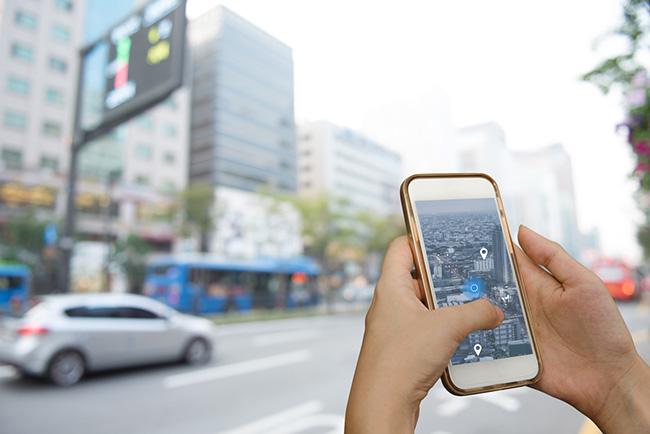Categories
5 hacks to help you save data on holiday
4 minute read

Using your phone abroad can be expensive, especially if you use a lot of data.
That’s why we’ve put together a list of holiday hacks to help you keep your roaming charges in check and the travel tempo upbeat.
How does data roaming work?
Put simply, ‘roaming’ is the technical term for using your phone overseas. As such your mobile needs to ‘roam’ to find a different network to connect to.
Depending on the country you’re visiting and your mobile network’s policy, roaming might mean you have to pay more to make calls, send texts and use the data.
Data roaming (connecting to the internet) can be particularly expensive. That’s because different apps and websites need different levels of data to function, so it’s hard to keep track of how much you’re using.
Some apps on your phone might even use data roaming when you’re not actively using them.
So, how can you be clever with your data on holiday and save yourself from racking up unnecessary roaming charges?
Hack #1: Stop apps from using data
Lots of people don’t realise that apps can use mobile data even when they’re not open or in use. There is a simple fix for this,all you need to do is switch off background data.
On iOS you can find the ‘Background App Refresh’ option under ‘Settings-General’. Or, if you don’t want to turn off an app completely, you can pick and choose which apps can access cellular data by going to ‘Settings-Cellular-Use Cellular Data for’, and disabling any apps you don’t want working behind the scenes.
For Android users, you’ll need to disable each app individually. You can do this by going to ‘Settings-Apps & Notifications-See All Apps’, then selecting the app you want to restrict data usage for. Then select ‘Mobile Date & Wi-Fi’ and toggle off your background data.

Hack #2: Prepare to get lost
Checking maps and charting directions on your phone means connecting to satellites, and that uses a hella lotta data. But don’t panic, if you get nervous charting new places there is another way to get your directions.
So long as you know the area you’re working in, you can download Google Maps for use offline. Here’s how:
- Open the Google Maps app
- Go to ‘Setting-Offline Maps’
- Tap ‘Select Your Own Map’
- Move the map to cover the area you need
- Click Download
If you’re not a fan of Google Maps, Maps.Me is a good alternative, giving you offline maps for all over the world. It’s not quite as detailed as Google Maps, but it does use less memory on your phone, so it’s a good option if you’re visiting multiple cities.

Hack #3: Pre-download your entertainment
Every minute you spend streaming is eating up megabytes. Here’s an idea of just of how much:
- Average streaming on Spotify: 2 MB+ per 3 minute song
- Streaming on Apple Music: 120 MB per 60 minutes
- YouTube in standard definition: 562.5 MB per hour
- Netflix on automatic settings: 1 GB per hour
- Amazon Prime video in standard definition: 800 MB per hour
These are all just estimates, of course. But it sure gives you an idea of just how easy it is to eat up those GBs. This doesn’t mean you can’t listen to music or catch-up on box-sets through.
Most streaming platforms have options to download music and videos to watch offline. You may have to have a certain type of subscription to do this, but if you’re away for a while, it might be worth it. Just remember to download fully before you jet off.
Hack 4: Use a ‘compressed’ web browser
Did you know, some web browsers use more data than others? Cheeky.
Google Chrome and Opera offer browsers that compress data, lowering your data consumption by up to 90%. But how does it work, you ask? By using one or more of these data-saving tricks:
- Using built-in ad-blockers, stopping unwanted ads and pop-ups from loading
- Using less processing power
- Operating through a cloud server
- Limiting bandwidth
- Letting you save web pages for offline reading
Do some research to find the browser that works best for you.
Hack 5: Switch off automatic back-ups
Automatic back-ups and app updates could be using huge amounts of data if you’ve got your settings wrong.
Carefully check the settings inside each app to make sure that updates and back-ups of large files like photos and videos can only happen when you’re connected to Wi-Fi.
Some big ones to check include iCloud, Google Photos, Google Backup and Dropbox.
Looking for more data-saving tips?
Join the conversation on the giffgaff community, and start getting data-smart before you jet off.





